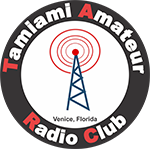DMR Etiquette
Networked DMR communications is a shared resource, with imposed latencies (delays) that require a high level of ETIQUETTE applied to radio operation. Operators must visualize that their communications may not only be heard by hundreds, or thousands of DMR users, but that resources are being tied up by communications and may deny other users access. Users should invoke a higher level of operational courtesy, and a stronger adherence to structured protocols to avoid denying access to other operators.
Because of latency that is introduced by digitally encoding of digitized voice communications with Forward Error Correction codes at the transmitter, the application of Forward Error Correction to decoded data at the receiver, and the delay inherent in internet traffic, significant and noticeable latency (delay) is inherent in DMR communications. DMR requires that you wait after a transmission stops, and before you start a transmission, to accommodate breaking traffic. It should be noted that there is no repeater squelch tail with DMR. Operators should wait for a minimum of 2 seconds after hearing the end of a transmission before initiating a transmission, and then wait an additional 1 second after keying the transmitter before speaking.
Nowhere is the importance of listening first more applicable to radio operation as it is with DMR, and especially networked DMR. When you arrive on channel, listen for a minimum of 30 seconds to get a sense as to whether the repeater or the talk group is in use. If the repeater or talk group is in use, listen for a while to acquire conversational context, and then intelligently decide whether you can or should interject in the conversation. Do not interject to mislead or take over a conversation. Rather, wait until the conversation is completed before interjecting if you mean to change topics or focus.
Remember that there’s two different timeslots on each repeater (1 & 2). You may see your radio indicating a receive light, and hear nothing. This traffic may be the CWID, or on the other timeslot, or a talk group that you’re not listening to.
When you press the Push To Talk (PTT) button, wait to hear the confirmation tones before you start talking. When you push the button, your radio contacts the repeater, and makes sure it’s not busy, and that you can hit the repeater. A long tone, or no tone when you hit the PTT means your transmission won’t go through. Ensure to program you digital channel “TX Admit” parameter to ‘color code free’. This will
prevent you from doubling with someone.
Check your audio level. Since the audio is digitized on your radio, and there’s no leveling happening in transit, it’s very important for you to send a proper audio level. Use the Parrot, or ask your friends to verify that your audio level is proper, and remember the mic to mouth distance for your radio.
When you wish to talk with anyone on a given talkgroup, it is common to give your callsign, your location, and the talkgroup. For example, “This is K4AC, in Venice, Florida on TAC 311”.
If you’re in a conversation with another person, and for some reason you lose contact with them, it may be that either end
has traffic that blocks your conversation. Watching your receive light will let you know if the blocking is happening at your end. Simply wait for a clear condition, and try again.
DMR latencies can make it difficult to complete a call if another station responds to a call that is not directed toward them. Unlike other operating modes, such as analog FM simplex or analog FM repeater operations, a station that is not targeted in a call and that responds, even with a simple query to ask if they were called, can cause the targeted station to not be heard. There may be no indication that doubling has occurred. If you think that your station may have been called but are not certain because you did not actually hear the call, it is important that your first response is to wait in order to allow for the targeted station to respond. It is far better to wait 10 or 15 seconds, and then, if the channel is clear, make a query to ask if your station was called than to respond when uncertain and deny the calling station and called station the opportunity to establish contact.
The DMR-ID of a station appearing on the talk-group may be displayed momentarily on your radio. This can be a consequence of the other station moving a dynamic talkgroup on a repeater, or a hot-spot (such as a SharkRF OpenSpot), to another talk-group, and occurs when the station momentarily keys their transmitter to move the repeater or hotspot to the target talkgroup. Such display of DMR-ID, or additional identifying information that may be programmed into the radio contact list, is not an indication that the station wishes to
be called. The station may only wish to monitor the talkgroup. It is difficult to determine what the station intends.
Use the smallest area talk group to make the communication work. If you and the person you’re talking to are using the same repeater, be sure to use the Local talkgroup. If you’re both in AL, use the Alabama Statewide channel. AL/TN area, use Regional, etc

